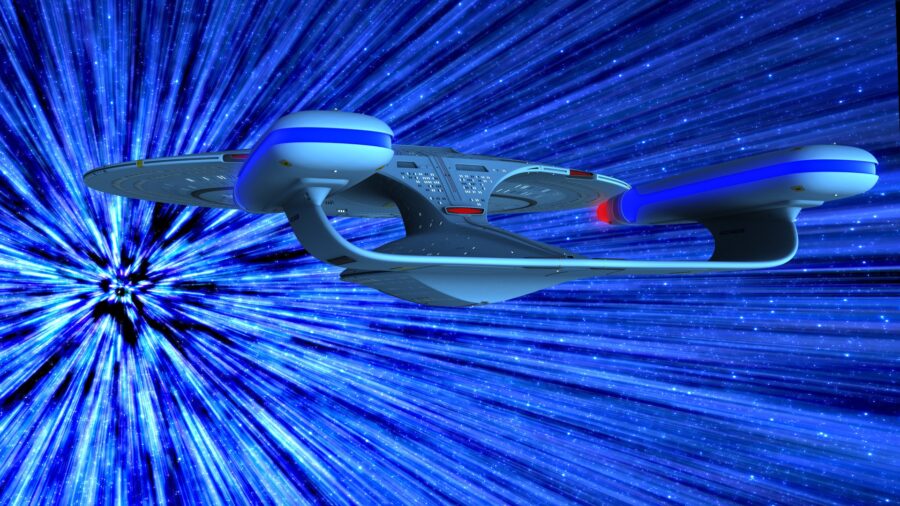NASA Is Close To Developing A Warp Drive?
NASA is attempting to take its grasp of the stars even further, as it has been established that the scientists working for the space company are developing a warp drive.
This article is more than 2 years old

Warp drive currently exists only as a plot device for science fiction stories, but it may not be long before traveling at the speed of light – and beyond – leaves the realm of the theoretical and becomes reality. According to a report from The Brighter Side, NASA is making a concerted effort to crack the secret to making warp drive possible. They aren’t the only ones trying to make the impossible happen – multiple scientists are exploring the possibility, as is a guy named Elon. There are, however, some big challenges to overcome.
According to Einstein’s Theory of Relativity, it is physically impossible for anything to move faster than light. Even so, NASA engineer Dr. Harold Sonny White is trying to test the limits of physics laws to achieve something close to warp drive, but there are some roadblocks. Moving mass close to the speed of light would take a lot of energy, so in 1994, theoretical physicist Miguel Alcubierre developed a theory in which a “bubble” is created in space-time that could “twist” distances, shortening the distances between two distant points.
Dr. White claims a ring-shaped warp drive could, theoretically (by Alcubierre’s theory), move a football-shaped spaceship at light speed. With changes to the shape of the ring, enough energy could be generated to move mass through space. Interestingly, this concept was actually shown in Star Wars: Attack of the Clones, when Obi-Wan Kenobi’s ship uses a ring-shaped warp drive to travel to another planet.
While NASA is still working on the theory, Elon Musk is trying to make it a practical reality. Musk’s efforts to go to Mars this decade is heating up, so the SpaceX founder is actively discussing warp drive as a way to make travel to the red planet more feasible. The problem with traveling fast goes back to Einstein’s theory: speed makes things heavier, and there wouldn’t be enough energy to move something that heavy that fast. That is what makes the “space bubble” concept in Alcubierre’s warp drive so intriguing, and scientifically necessary. In theory, you don’t need the energy to move mass as Einstein claims, if you warp time and space instead of focusing on propulsion. Dr. White heads a team of physicists and engineers at NASA trying to do just that, with a device called the White-Juday Warp Field Interferometer, which could lead to a warp drive. The device would theoretically create a tiny warp bubble making travel much faster, but not achieving light speed. Still, if it works, it could revolutionize space travel. Here’s a video pointing out the challenges Elon Musk’s SpaceX is facing with the warp drive concept.
In a strange coincidence, the research is gearing up just as humankind nears the fictional date in Star Trek lore when warp drive was invented. According to Star Trek, the warp drive was invented in 2063, when Dr. Zefram Cochrane created a spaceship with a warp drive. His warp speed test flight caught the attention of the Vulcans, who realized Earthlings had developed the technology to travel to distant planets.
They came to Earth to meet Cochrane and establish “first contact,” and the rest is Star Trek history. This scene, from Star Trek: First Contact, shows how the first “warp flight” happens, which may not be too far from how it might actually happen in reality. It truly looks horrifying.













